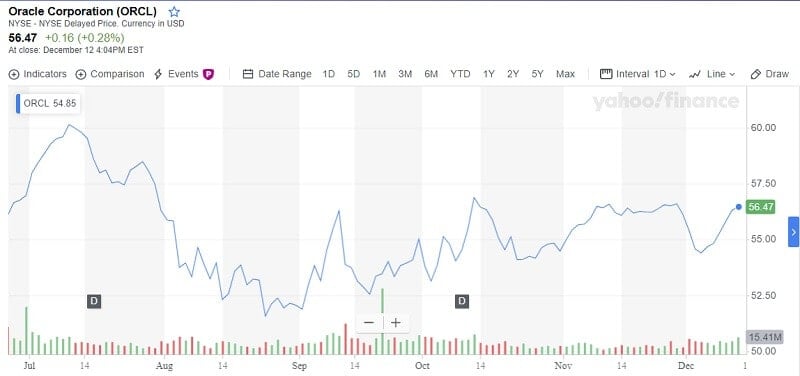(Updated October 2021)

Two times leveraged ETF is a vehicle calibrated to 200% or double the gain or loss of the price movement
Did you come across something called a leveraged ETFs? What is leveraged ETF and how it is different from other ETFs? We found a lot of questions like these thanks to visitors to our website. We’ll try to make this closer to you especially if you are a beginner in this field.
Let’s take time to jump in and explore these somewhat new securities.
Firstly, leveraged ETFs aren’t for long-term investors.
When you are buying a leveraged ETF, you must know that you have to make short-term trade. As we said, it isn’t a long-term investment. For newbies, a short-term trade lasts from one day to several weeks, not longer. Don’t try to buy a leveraged ETF for a long-term investment.
They became one of the most successful varieties of ETFs in recent times. So, we can easily say that leveraged ETFs are a novelty. However, they can be difficult innovation. Well, they are not either good or harmful, all you need is to know them better to be able to trade. Here are some basics about leveraged ETFs.
Let’s say the traditional ETF tracks one security in its underlying index, 1:1. As a difference, with leveraged ETF, you can strive for a 2:1 or even 3:1 ratio. A leveraged ETFs use financial derivatives to magnify the returns of an underlying index.
Leveraged ETFs are possible for the Nasdaq 100 and the Dow Jones Industrial Average, for example.
Where is the advantage?
Leveraged ETFs can help you to capitalize on the short-term momentum of a particular ETF. The main question is how to add leveraged ETFs into your portfolio?
For example, the trader is assured that a particular stock will drop. And trader is shorting that stock. Besides, shorting stocks are bought on margin and the trader has to borrow the money from the broker. That is leverage.
With leveraged ETF, you don’t need to buy the securities on margin, since it allows you to amplify your returns by multiples of over 1 up to 2 or 3 times. That depends on the ETF product you are trading. The amount of leverage will depend on your experience or temperament. Some less-experienced traders will choose lesser leverage, for example.
But be aware, they are designed to return three times the inverse of the S&P 500 index. So, if the S&P 500 drops by 1%, this fund should rise by approximately 3%. And contrary, if the index rises by 1%, this fund should drop by about 3%.
Leveraged ETFs have the aim to outperform the index or stock they track.
Also, there are inverse leveraged ETFs. They give multiple positive returns if some index decreases in value. They operate the same as normal inverse ETFs but designed for multiple returns.
Leveraged ETFs are not suitable for beginner’s portfolio
Please, don’t make a mistake. Yes, it is fascinating to have amplified returns but you should never add leveraged ETFs into your long-term portfolio. By buying them as a long-term investment you are making a foolish decision. To repeat, leveraged ETFs are not investments, they are speculation. Don’t mislead yourself.
Moreover, the payoff may not be as bright as you predict. So, they are risky. You will have to pay management fees, brokerage commissions, taxes on capital gains.
Leveraged ETF surely has its purpose for short-term investing. For example, you can use it as a hedge to protect a short position. Yet, long-term investors should be careful with leveraged ETFs.
Definitely, when things are going fabulous, leveraged ETFs are excellent investments. Over the first 6 months in 2017, the S&P 500 has returned a bit over 10% but the 3 times amplified leveraged ETF has returned approximately 30%.
But, think about what happens when the market turns down. For example, the S&P 500 falls by 10%. A leveraged ETF tracking the index could fall by approximately 30%. Just think about these figures.
How to make success in trading leveraged ETFs
As experts recommended, start with small if you aren’t experienced enough. When your portfolio becomes larger add more shares. There will be more risks, of course. But you will diversify your trades. Some elite traders recommend starting with an account of $25.000 minimum. Less isn’t recommended due to trading ability and margin rules for smaller accounts. Moreover, a smaller amount may cause conflicts in your decisions. You’ll need space to make them.
Further, trade when the sentiment is low. It is the best opportunity to profit. Set a stop-loss to, let’s say, minus 2% or 2.5%. Follow the trend and enter the winning position. If your profit goes up, sell some of your winning positions. Do it on spikes. If you reach 2% of profit very quickly, sell half of your shares to move stops up to breakeven. This can be a no-lose trade.
Read a lot about ETFs and leveraged ETFs and test some free trials to find the accurate one. Do your own homework, it is the best way.
Always monitor leveraged ETFs on a daily basis. If you have to use a limit order on a position it is reasonable to sell your position since you can’t follow market makers strictly. If you want to turn trade, it is better to trade traditional ETFs. that will give you less profit, but more freedom. For leveraged ETFs, you will need to sit and look at the screen or phone almost all day long. Trading isn’t for everyone, at all. That job can be addictive. Take a break from time to time but don’t give up. If you made some mistakes, keep in mind why, when, what caused them. And learn how to avoid them.
And buy when the ETFs are positive.
Disagreements
The leveraged ETFs are new and still developing, and the disagreements will change as time goes by.
Yes, they will provide you 2 times bigger returns but not always.
The typical fault is that leveraged returns are on a yearly basis. This is false. They provide multiplied returns on a daily basis. So, don’t look at the index’s yearly return of say 2% because the leveraged ETF will seemingly not have a return of 4% per year. Rather take a look at the daily returns during the year. However, something is more important. The multiple returns don’t mean you will have multiple profits. You may have multiple negative returns also.
Leveraged ETFs are high-risk due to their design. Also, some index-tracking malfunctions may occur as well as some other limitations.
Bottom line
These the most attractive ETFs in the market today have a great advantage of using. Traders can overcome some of the risks through diversification and leveraged ETFs are very suitable for that. Still, they are still adjusted for stocks only. Therefore if the stock market falls the ETFs will fall too. Anyway, you can enhance your trades if you spread the risk across other assets besides stocks. It’s easy to find ETFs assets like currencies, bonds, or commodities. That will help you to improve your portfolio diversification buying power (the last mentioned is for really aggressive traders).
Leveraged ETFs are new products but they are providing more choices to manage risks and take profit.
They are a good option but what if you don’t want to enhance your buying power if the bear market is in play? That would require short positions to take advantage of the downside potential in the market. A leveraged ETF could be a great answer in this situation, also.


















 Investors’ demand drove Saudi Aramco market value to $2 trillion on the first 2 days of trade in Riyadh
Investors’ demand drove Saudi Aramco market value to $2 trillion on the first 2 days of trade in Riyadh
 More and more countries allow medical and recreational use of marijuana. But the inconsistent set of rules and regulations cause that the companies involved in cannabis have problems.
More and more countries allow medical and recreational use of marijuana. But the inconsistent set of rules and regulations cause that the companies involved in cannabis have problems.